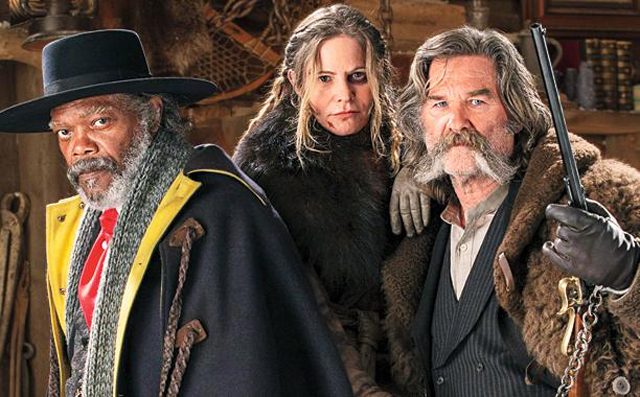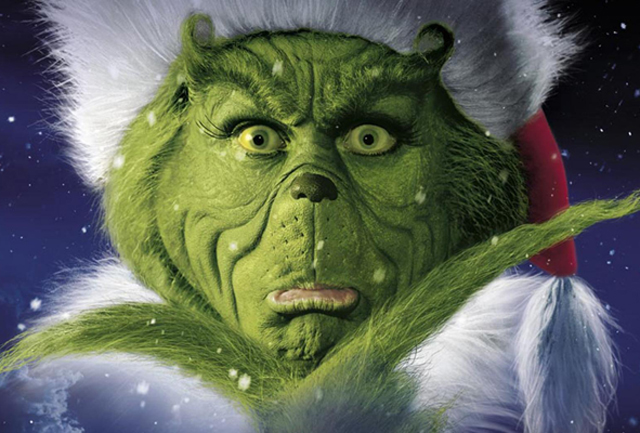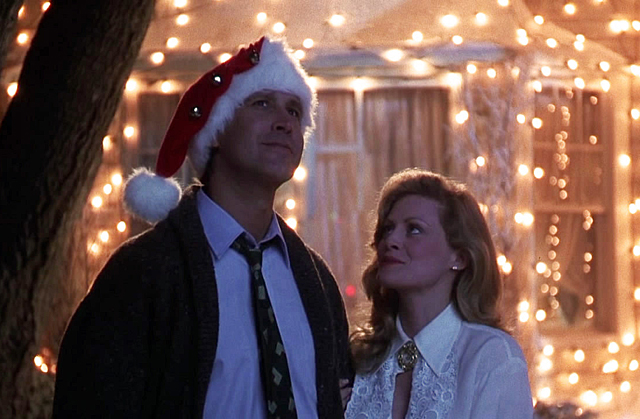
Quentin Tarantino has built an enviable reputation over the years as a filmmaker to the point where every time he creates a new feature, it becomes a hotly anticipated event. In recent years, he’s been on a particularly strong roll, with both Inglorious Bastards (2009) and Django Unchained (2012) becoming huge box office successes as well as picking up awards by years end. What’s even more remarkable about Tarantino’s success at the same time is that he’s done all this without ever compromising his distinctive style. I don’t know whether he’s managed to do it by just being lucky or by the sheer goodwill he’s earned in the industry, but Tarantino has manged to get away with more in his movies than most other filmmakers are able to. And as long as his movies stay successful, then he’ll continue to keep pushing that envelope with every film. Known for delving into multiple types of genres throughout his career, we’ve seen from Mr. Tarantino a wide variety of different stories, and yet, each one still feels connected thanks to his unique cinematic voice. After Django Unchained, Tarantino made the unprecedented move of staying within the same genre with his next feature. That film would become The Hateful Eight. Though Django featured many elements that you normally would associate with the Western genre, it’s setting in the deep South helped to set it apart. Hateful Eight on the other hand is set in the American Western frontier, so it is much closer to genre than what Tarantino has done before. And truly, this is very much a love letter to the Westerns that Tarantino has idolized since youth. The movie is clearly intended to invoke the memory of those old classic and Spaghetti westerns of the past.
But, this was a movie that at one point could’ve been shelved forever. Late in 2013, Quentin Tarantino fell victim to breach in privacy when his first draft of The Hateful Eight was leaked online. This was such a betrayal of trust for the director that he soon announced that he would not be making the film at all; canceling the project because he felt exposed by the breach and that he felt the film could never materialize out of that cloud of mistrust. Thankfully for Tarantino, few actually saw the leaked script before it was removed, and after a few rewrites and a successful table read with Tarantino’s choice of actors in the roles, the project was back on board and bound once again for it’s 2015 release. But, Tarantino wasn’t just interested in making any old movie this time around. A long time champion of filming on celluloid as opposed to digital photography, Quentin wanted to use this opportunity to film with more than just the usual film stock. For The Hateful Eight, he was interested in filming the movie using the Ultra Panavision 70 process, which hasn’t been in use since the late 1960’s. Ultra Panavision is a 70 mm process developed back in the 50’s that became the widest format ever used in Hollywood. While a normal widescreen film is shot in a 2.40:1 aspect ratio, Ultra Panavision is able to produce an image at nearly 2.78:1 in width, making it a truly epic sized image. Few films were produced in this wide process, such as Ben-Hur (1959), and this is the scale on which Tarantino wanted to tell this story. Couple this with a revival of some other common features from old school Hollywood spectacles, like the Overture and Intermission, and you can see that Tarantino was intending this to be a loving throwback to a classic film-making, all the while giving it that typical Tarantino flourish. Was it an experiment that paid off in the end, or was it too indulgent for it’s own good?
The Hateful Eight of course is about exactly what the title describes. In the remote wilderness of the Wyoming Rockies, eight strangers are forced into shelter to escape the bitter cold of an approaching blizzard, all with their own baggage and ill intent towards one another. Among them are two renowned bounty hunters, Major Marquis Warren (Samuel L. Jackson) and John Ruth (Kurt Russell). Ruth is on his way to the town of Red Rock, and cuffed to his arm is his still alive bounty, Daisy Domergue (Jennifer Jason Leigh). John Ruth prides himself on bringing in his prisoners alive so that they can be hung by an executioner properly, which has earned him the nickname “The Hangman.” Daisy has continued to make his long road to town as miserable as possible and it’s also caused John Ruth to be suspicious of other characters around trying to steal his prize prisoner away from him, including the quick witted Warren. While on the road, Ruth and Warren pick up another passenger, the future Red Rock sheriff Mannix (Walton Goggins) who doesn’t take long before antagonizing the others due to his sympathies with the Confederate cause in the only recently ended Civil War. The four make it to their place of refuge called Minnie’s Haberdashery, where they find four others seeking shelter. One is an English fellow named Oswaldo Mobray (Tim Roth), another is soft spoken thug named Joe Gage (Michael Madsen), another is a groundskeeper simply known as Mexican Bob (Demian Bichir) and finally the last guest is a grizzled retired Confederate general named Sandy Smithers (Bruce Dern). The eight strangers make themselves comfortable before the night grows darker and colder and the tension grows higher as some of the group soon learn that the ones they share company with are not entirely being truthful about who they really are.
It doesn’t sound like too much happens based on that premise, but that’s only because I don’t want to spoil the surprises that happen throughout the film. Unfortunately, the film’s narrative becomes the biggest issue that I have with the movie overall. While Tarantino does play around with his usual flair for mischief and indulgence, here it can sometimes be a hindrance to the momentum of plot. At over 3 hours in length, at least in the Roadshow version that I saw, the movie is a long one to sit through, with lengthy patches that deliberately take their time to get going. I’m fine with long movies as long as they do keep the viewer engaged and on the edge of their seats. In fact, Tarantino did do just that with his nearly 3 hour long Django Unchained, a movie that never lagged once despite it’s length. Here, I felt that there were one too many moments early on that took too much screen time without ever having a reason to be so lengthy. It’s a case where I think Tarantino’s proclivity for indulgence may have backfired this time. And believe me, I still love it when Tarantino indulges himself with his movies; just as long as I can still stay engaged. The pub scene from Inglorious Bastards in particular is a perfect example of indulgence done right from the director. In this movie, there is a lengthy passage that takes place within a stagecoach as the characters talk about their past experiences. This scene is nice, and features some of Tarantino’s trademark oddball dialogue, but I could feel my attention drift during these early scenes in a way that I never felt from a Tarantino movie before. That unfortunately hurts the movie in the long run, but overall, it doesn’t make this a terrible film by any means. There’s still plenty to like. It just doesn’t have the same kind of control over the story that Tarantino has shown in the past.
And part of that may come from expectations that I may have had about where the story might go. Overall, the entirety of The Hateful Eight is about subverting the expectations of the viewer. Tarantino chose to film in an ultra-wide film process that’s commonly associated with grand scale epics, but he uses it here in a story that’s all about isolation and claustrophobic tension. For most of the three hours of the movie, our characters occupy a small log cabin set; quite different than the grand vistas that you would expect from an Ultra Panavision feature. But, Tarantino does make that work for him on a visual level, as opposed to the narrative one. There are plenty of well composed shots that allows Tarantino to tell the story the way he wants and still have it feel as bombastic as his other features. In many ways, his visual flourish does make up for some of the narrative faults, and it is fun watching the director both work within these constraints as well as play around with them. But, what the movie lacks in the long run is the tension that usually invigorates the plots of most of Tarantino’s films. As some of the characters begin dropping dead in the cabin and suspicions arise between them, the film stops being a typical Western and turns into more of an Agatha Christie who-done-it style mystery, which again is kind of interesting to watch seen through Tarantino’s style. But, Quentin also has worked in this field before, with his first feature Reservoir Dogs (1992). That film has a lot in common with Hateful Eight, including the confined singular setting and the rising suspicions between the characters. But that movie ran at a nice compact and tense 100 minutes. Hateful Eight takes too many detours that, while fun, kind of diminish the final result by the end.
Where the movie does triumph, however, is with the cast of characters. I’ll say this about Tarantino; he has not lost the ability to write amazing characters in his films. Every person in The Hateful Eight is as fascinating as any other character that Tarantino has created over the years, and like many of his features before, the highlights are always the ones where these characters interact. Another trademark aspect of Tarantino’s films is his remarkable ability to cast his roles perfectly, and sometimes with unexpected choices. The Hateful Eight features what you could probably call the Tarantino All-Stars, because each one has worked with the director before in the past, but mostly never on-screen together. This includes Samuel L. Jackson (a staple of most Tarantino films), Kurt Russell (Stuntman Mike from Death Proof), Tim Roth (Reservoir Dogs and Pulp Fiction), Michael Madsen (Reservoir Dogs and Kill Bill) and Walton Goggins and Bruce Dern (both from Django Unchained). All that’s missing is Christoph Waltz, who I’m sure would have participated had he not already committed to playing a Bond villain in Spectre. Each of the all-stars here are uniformly excellent and manage to deliver solid performances all around. New to the cast though is Jennifer Jason Leigh, who is probably the one who shines the most. Leigh plays a truly despicable character in Daisy Domergue and her performance is an absolute knockout. You can see the absolute evil in this character just in the way she smiles with her rotten grin, but Leigh does a lot more brilliant work to help you see the humanity behind the gruffness as well. Considering the talent involved in the cast, it’s a treat to see her stand out as well as she does and she’s placed strongly among some of Tarantino’s many other famous villains like Victor Vega, Ordell Robbie, Bill, Hans Landa, and Calvin Candie. So, once again it’s Tarantino’s ability to create standout characters that becomes the highlight of his movie, and we get eight amazing ones to witness here too.
I should also state how special the Roadshow presentation for The Hateful Eight is as well. It may not be something that moviegoers are familiar with today, but the Roadshow was a common practice for epic spectacles back in the early years of cinema. Epic films back then were treated as more than just an event back in the day; they were treated more like special engagements at the local cinemas across the country, much like how we treat the opera or a Broadway show as special. Every guest to a Roadshow presentation was treated to more than just a movie. The film would have a fully orchestrated Overture that preceded it, along with an Intermission halfway through to allow the audience to take a bathroom or snack break before the second half would begin. Not only that, but in select theaters you would receive a printed out program detailing the film and it’s production as a special treat. That same presentation is lovingly recreated in this presentation by Tarantino. With The Hateful Eight Quentin Tarantino is hoping to revive this long out of use practice in the hope that it will catch on and make movies feel like Special Engagements again. I was fortunate to be near a theater that played this Roadshow version, and it was neat to not only see a new film that felt like a loving throwback to old Hollywood, but one that makes good use out of the tools given to it. For one thing, it is great seeing the long out of use Ultra Panavision process return. It’s disorienting at first seeing the very wide image on a regular cinema screen, but as the movie rolls along, you can clearly see why Tarantino chose to film it this way. I for one want to see 70 mm film make a comeback because few other formats are able to capture as much detail in an image as this does. The cinematography by Robert Richardson is spectacular and he proves to be remarkably adept at using this process that’s been out of usage for nearly 50 years. Also providing a nice throwback to classic cinema, Tarantino called upon legendary composer Ennio Morricone (The Good, the Bad, and the Ugly) to write the original score for this feature, and of course the grand maestro delivered a great score that feels both uniquely new and nostalgic at the same time. If you do see this movie, try to watch this Roadshow version if it’s available in your area. It’ll be worth it.
So, in the end, despite some problems with the pacing of the narrative, Quentin Tarantino delivers yet another solid effort. Overall, I would say that this film is worth seeing more for the actual presentation itself rather than it’s story. I for one admire Tarantino’s effort to keep classic Hollywood film-making techniques alive in this digital era that we live in now , while at the same time keeping true to his frequently indulgent cinematic tastes. By not letting us forget that movies were once filmed this way, he helps us to remember just how special the tools of the trade can be. I certainly never thought that I’d see a new film made in the Ultra Panavision 70 process in my lifetime, so I thank Tarantino for doing just that. Hopefully, the movie will do well and that it will inspire other filmmakers to want to make their movies in 70 mm and other long out of use widescreen formats too. At this point, only Tarantino and Christopher Nolan seem to be championing large format film-making in this digital age, albeit in different forms (Nolan being a fan of the IMAX process). As long as they continue to make their movies a showcase for these processes, there may be hope that some day they might be in fashion once again. Unfortunately, despite loving the presentation, I can’t quite say that The Hateful Eight is Tarantino at his best. The sluggish first half did lose my attention at times, which past Tarantino films have not done before. A tighter edit might have helped the film in the long run, but what is presented here is still worth seeing. You’ll still get the trademark Tarantino experience, even if it feels a bit too indulgent. Just go in knowing that this will be a long sit through, but one that will reward you by the end. The great dialogue and characters are still there and the Roadshow presentation is worth every penny if you can manage to see it that way. It’s big and bloated, but every bit what you would expect from Quentin Tarantino and it shows that the rebel director is not losing his touch one bit.
Rating: 8/10


